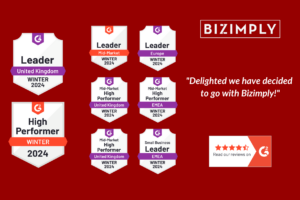Small Changes That Make a Big Difference
In our previous article we stated that there are real benefits to conducting performance reviews and employee appraisals – but we also commented that it is important to do them right. In the eighth article of our series of how small changes can bring a big difference to your business, we present a few guidelines that will help you to raise staff performance.
Part 8: Performance Reviews – Do’s and Don’ts
1. Do the background work
Perfect planning prevents poor performance. This also applies to conducting performance reviews. So, you must first do the background work. Remind yourself of the employee’s job description and responsibilities, employee development interests and needs. What was agreed at the last review, or, if it is a new hire, what was agreed when you engaged them? Review performance objectives and performance standards. Involve the employee in this before you sit down together. Think about how the employee could do a better job and contribute more.
2. Prepare the employee
Tell employees about the appraisal process during their hiring and orientation. When people know it is part of organisational policy, they don’t feel singled out. Schedule the meeting in advance, explain the process, and give the employee a copy of the evaluation form to review and complete before the meeting. Ask the employee to also give some thought to their performance over the period in question in order to come prepared with examples of successes and challenges, insights into trouble spots within the organization or systems for work, and ideas for improvements and areas for development.
3. Prepare yourself
Plan to conduct the interview in a location that is free from interruptions. Remember to schedule sufficient time; evaluations can take quite a bit of time in some cases. Complete a draft of the appraisal form in advance. Plan what you are going to say, especially about particularly good or poor performance. Anticipate possible points of confrontation and likely reactions from the employee. In doing that, maintain an open mind to hear what the employee has to say about points of possible contention.
4. Conduct the meeting in a non-confrontational way
Review the past and analyse the present – but you should devote at least 50 percent of the meeting time on the future.
Start on a positive note. Ensure employees know that the purpose of the meeting is to help them perform their jobs better and that their input is valued. They are active participants in the process.
Describe specific behaviour in simple, direct language. Avoid commenting on attitude or personality as these are intangible. Above all, don’t say something such as, “You’re lazy” or “You ignore customers” as this will lead to confrontation. Instead, focus on positive behaviour that benefits both the company and the employee. For example, you could say, “If you pay closer attention to the customers you will observe when they need service. That way we’ll do more business and you’ll earn more tips.”
Also, if your company has specific performance standards, refer to them. Rather than saying “You’re slow” try to say, “We’ve noticed you often take two minutes to chop an onion; our standard says it should be done in one.”
Encourage feedback, there might be a good reason. Perhaps the employee has an injury, or needs training, or something else is preventing better performance. Ask them to suggest methods and ideas for improvement themselves.
If you have to give negative feedback, try to balance it with something positive. Even if the employee performs poorly in one area, you can probably find something positive in another. An appraisal should help to build or at least maintain the employee’s self-esteem and desire to succeed in the job as well as correcting bad habits.
For high performers, it’s the opposite. You don’t want them to walk out of the meeting thinking they are perfect, the point is to make them realise their potential and aim beyond.
5. Discuss solutions with the employee
It is never good enough simply to tell an employee that improvement is necessary. Unless you identify the reasons for inadequate performance they are unlikely to improve. Explore with them what they can do and what supports or resources they might need to bring performance up to standard.
These might include pairing the employee with a high performer, providing additional training, clarifying expectations, brainstorming ways for the employee to meet standards.
And be prepared to take constructive criticism. Sometimes managers are at least partly responsible for poor performance!
6. 360o reviews
This is one of the reasons why you should look into 360o reviews (as covered in our last article). Hospitality and retail depend on good teamwork and a simple dialogue between an employee and superior may not surface any underlying issues.
However, they are not suited to all organisations. It is really important that you have a climate of trust. It may be a good idea to bring in external consultants for the exercise, who will analyse the feedback and share it in an objective report to managers and staff, who can then get together and plan next steps to improve performance.
The big advantage of 360o reviews is that it helps to improve overall organisational, departmental or team performance, not just specific individuals.
7. Finally, give it a little time
Although you should give feedback directly in the appraisal meeting, allow yourself time to think things through. You are only human, and it may be that you were unduly affected by your mood on the during your performance reviews. Were you too harsh? Or too soft? More importantly, you may think of something new after the meeting. It can be very positive for an employee to be called back to a post-appraisal debriefing and to hear, “I’ve thought about what we discussed and here is what I suggest we do”.
Then set out the specific objectives and development plans for the coming period.
You should consider a reliable system that stores employee’s information securely and records relevant incidents in the workplace to get a full overview of your staff’s performance. In the next article of this series, we look at the challenge of hiring and managing temporary staff.









